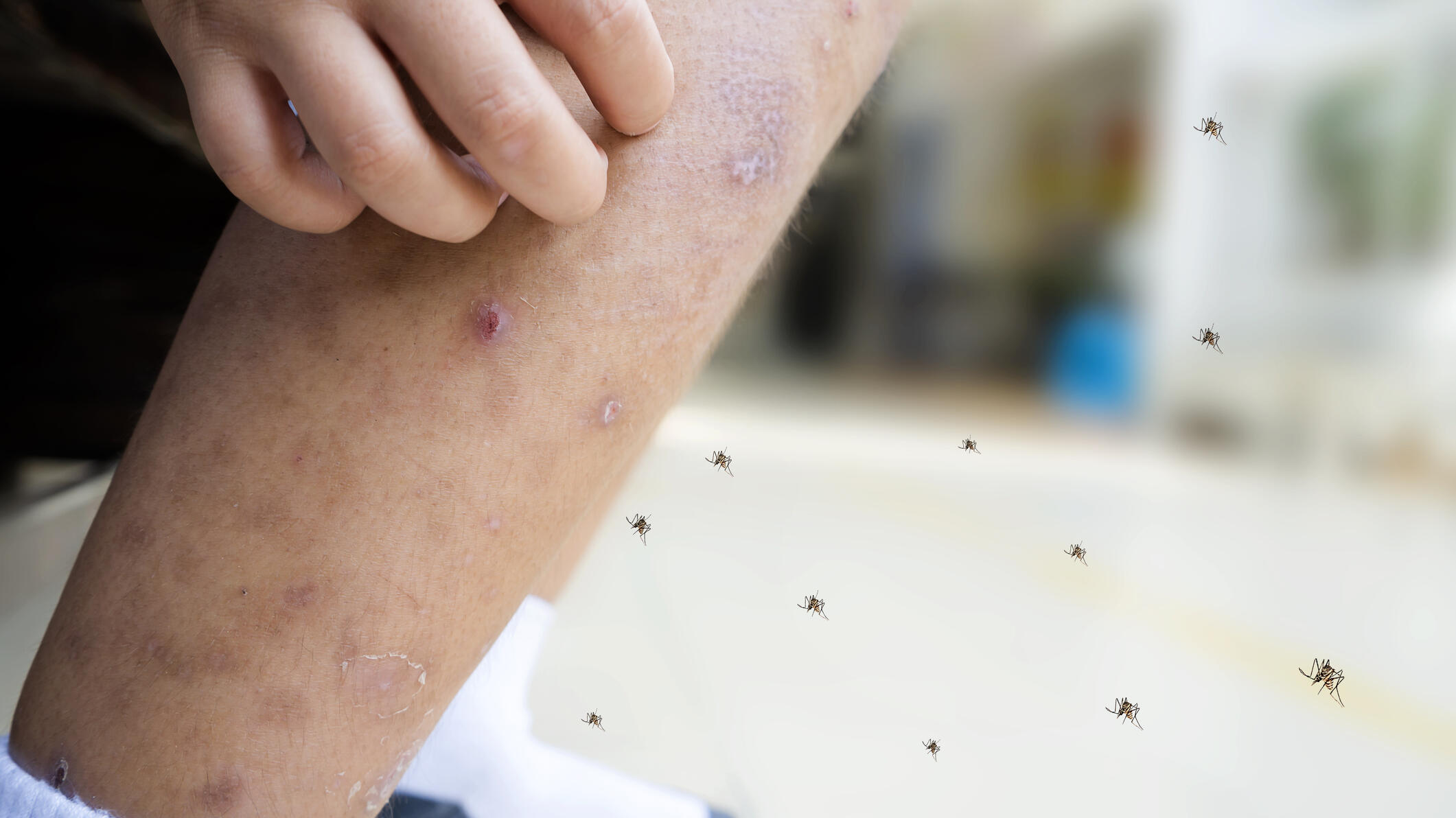

Imagine spending a beautiful bank holiday weekend working in the garden when you realise you have unwittingly become a dinner buffet for mosquitoes. When the redness and itchiness appear, it is clear that your right leg has been bitten. Is this simply coincidence or are there reasons why one side of your body could be more attractive to hungry female mosquitoes? An inquisitive BBC Radio Merseyside host, Tony Snell, decided to consult the Twittersphere to see if anyone could provide him with the answer. Fortunately, an eagle-eyed scientist (and revered Tweeter) at the Liverpool School of Tropical Medicine, Dr. Elli Wright spotted Tony’s question. Within 24 hours, she had sent a vector biologist to BBC Radio Merseyside to solve the mystery.
Dr. Lee Haines decided it was best for Tony to set the scene so she could understand all the cues a female mosquito might have used to navigate towards Tony’s right leg.
Was he definitely bitten by mosquitoes? Yes. He squashed a few as they were biting.
What time of the day or night was he bitten? Daytime.
Where was he at this time? In the cool, damp back garden surrounded by plentiful vegetation.
How was the weather? Warm and a bit breezy.
Did you have a dog with you? Yes.
And so, the inquisition continued…
Dr. Haines explained that mosquitoes are attracted to a combination of things like carbon dioxide (CO2), heat and certain smells such as nonanal. They locate their next bloodmeal by following wafts of scents mixed with CO2, which brings them close to their next blood meal. The more concentrated the plumes of this aromatic cocktail released, the easier they will find you. If Tony was working hard and he had a dog next to him, there would be plenty of CO2 released into the air to attract a swarm of hungry female mosquitoes. Because mosquitoes are not strong fliers (and are somewhat lazy, albeit persistent), they will land on a surface that takes the least energy to reach. Although the dog may have helped lure the mosquitoes in, mosquitoes would find her fur more of a barrier than Tony’s bare leg. Additionally, the breeze may have been strong enough to keep one side of Tony’s body more protected than the other, his right sock/shoe/sandal could have been releasing a stronger aroma than the left, or even the plants surrounding him could have played a role. Some plants, such as lemon eucalyptus and other lemon-scented vegetation, can deter mosquitoes; while other plants can attract mosquitoes, particularly those that like a lot of water (for example, water lilies and hyacinths).
Dr. Haines concluded the investigation by explaining some of the reasons why mosquitoes may be attracted to only one side of your body. However, in Tony’s case, it is likely several factors contributed that day to turn his right leg into the daily garden special.
So, what can you do to prevent yourself from being bitten? Use an insect repellent that contains 30-50% DEET. This chemical works by blocking the mosquito’s ability to detect chemicals like CO2, so in essence, you become invisible. There are other DEET alternatives, but they have a much shorter period of protection (hours) and must be frequently reapplied. Also, avoid wearing sweet, floral perfumes, cheese-smelling socks and being outside during peak mosquito biting times (this varies according to the mosquito species present). Do remember that if there is a nice wind blowing (>10 mph) or it is raining, most mosquitoes will be taking shelter so take advantage of this and head outside!
LSTM's Well Travelled Clinic has produced an advice leaflet on Insect bite avoidance.
You can listen to the discussion here.